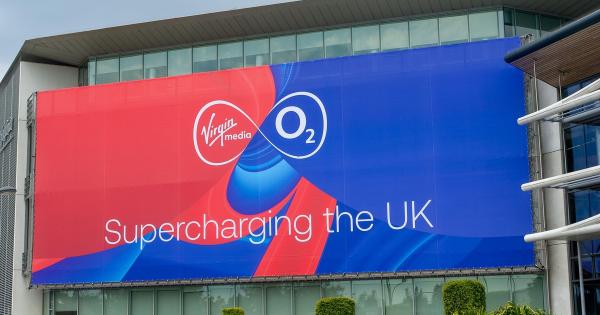
TOP Conference 2024 took place from the 21st to the 22nd of February, returning for its third year to 133 Houndsditch, London. The comprehensive two-day programme covered eight topic areas across the two days, featuring experts from across the industry and academia.
The event, developed in conjunction with Optical Connections, provided excellent networking opportunities for optical and photonic component and systems manufacturers and developers, along with fibre infrastructure and data centre providers. It focused on the development and application of optics and photonics in telecoms, along with presentations on photonic components and free-space optics.
UKTIN sponsored the conference and in a dedicated UKTIN session on the first day, introduced the network to the TOP audience. The session presented the foresight work carried out by the Optical Communications and Photonics Experts Working Group (EWG) within UKTIN, debating interdependencies with other key technology domains in delivering future network solutions.
The role of UKTIN
Professor Dimitra Simeonidou, Director of Smart Internet Lab, University of Bristol, and UKTIN Lead for UK Research Capability, kicked off the UKTIN session by introducing the network and its mission, described as “to create a thriving and diverse ecosystem”. She discussed the importance of creating diversity in the long term by driving partnerships and bringing diversification.
Simeonidou emphasised the expertise of UKTIN’s consortiums, which spans “the whole ecosystem from early research stages to industry applications” and covers a number of key work streams. Anybody can submit a direct query, she added.
“UKTIN has been running for just over a year, and the engagement we have received is significant,” the Professor said. “Our expert working groups are providing for free, and very generously. It’s an exciting time.”
The latest findings from UKTIN’s Optical Comms Expert Working Group
The group’s Chair, Nick Parsons, CTO at HUBER+SUHNER, explained that the EWG is exploring how all-optical infrastructure will drive increased performance capability across the telecoms landscape.
Building optical networks at the level of physical fibre interconnectivity, with switching and multiplexing, is an important aspect of optical communications, he said, in addition to photonics and the optical medium. “Optical connectivity is a platform for the densification of the connectivity of telecom services and bearers that other expert working groups, such as Core and Wireless Communications Technologies will consider,” he said.
Parsons added: “Working in close collaboration with leading academic and industry experts, we have been tasked with looking at the trends in this area. We are analysing where we are strong and where we have gaps.”
When describing the UK phonetics landscape, Parsons said, “We may have 200 businesses but they are not well coordinated. There is no common purpose in what they are doing. This is where we want to improve. We want collaboration between these entities.”
Parsons referred to a “scary statistic: there is a three-to-one imbalance of imports versus exports. What can we do to change this? How can we balance trade? The key focus should be manufacturing costs. We currently use Asia for this. AI and quantum need advanced photonics infrastructure. This is a major opportunity that we can capitalise on.”
Optical wireless, Parsons said, is where we have a unique capability. “We need to hyperscale this to get a real business benefit. Integrated photonics is also where we have expertise in academia. The key challenge is aligning the processes of founders located elsewhere. We need to choose what we are best at. Arguably, we may need to focus on our ability to design the chips and use the UK’s brilliant facilities to prototype.
Parsons concluded by asking the audience to get in touch to enable further discussion.
Panel session: The role of optical and photonics across the broader telecoms ecosystem
Chaired by Simeonidou, experts discussed the future landscape, highlighting the opportunities and challenges
Andy Sellars, Co-Chair of UKTIN’s Semiconductors Expert Working Group, said: “It's fair to say that semiconductors can be defined in three materials: silicon, optical communications and large organic semiconductors. In the telecoms industry, it's about processing data. We have seen a massive growth area for semiconductors. In May last year, DSIT published a study addressing the supply chain, skills gap and the need to scale up. Although we design semiconductors in the UK, we don’t fabricate anywhere apart from the Far East. This is a real failure. While we are seeing diversification, the UK perspective is that we don’t want to compete. We want to focus on our strengths because this compliments the international perspective. We need to form partnerships to mitigate the risks.”
Parsons, referring to DSIT funding, said: “Quantum is an area that needs photonics and optical communications. They may well identify as being something different but we need to include that in our potential for moving forward. The volume manufacturer is critical. But should we focus more on having intelligence design and procurement in the UK? And have the technologies been made elsewhere? Or, in the knowledge that we are going to have to find elsewhere to scale up, should we double down and invest in our own capability and devices? Europe and the US are family countries; of course, this may change, but today they are. Do we have to have the entirety of the supply chain in the UK?”
Simon Saunders, Chair, UKTIN Wireless Networking Technologies Expert Working Group: “Almost every end-to-end connection involves a mixture of optical and wireless elements: the only question is where the boundary sits. Generally, the boundary has been moving towards the end user, which is more spectrally efficient on the wireless side but imposes greater complexity on the optical network, as well as the need to deal with the denser multilayer radio access network. That makes it clear that the optical and wireless should be co-designed for best outcomes, but these communities have been quite separate in the past.That creates a significant opportunity for the UK to design and manage these systems jointly in a more joined -up ecosystem, which is very much the role of UKTIN This is a great opportunity for everyone to come together.”
Neil McRae, Chair, UKTIN Core Network Technology Expert Working Group: “If we want to grow into a mature market, we have to change our ambitions. If we look at the industry, none of the big telcos are making enough - not in wireless - from their assets. There is a disconnect between what we want to do for ourselves and what we are willing to do for others. We are effectively building for someone else. There is no question there is money to be made here. But we spent too much time trying to connect the mobile phone: only two guys got rich from this, and neither is British. How do we take this way beyond the smartphone? You can’t get a signal in a car park or airport. How do we make 6G the G of connectivity? Humans are not going to drive the demand, but AI. How are we generating the curiosity in healthcare that is going to drive a different need for communications? We need to think about the end-user. There is a lot for us to learn.
The event concluded with a call to action from Saunders: “The government is very open and willing to form a strategy. Now is the time to be knocking on that door.”
Afterwards, there was a chance for attendees to see demonstrations from exhibitors: Laser 2000 (UK), a value-added reseller, providing products and solutions for photonics and networks applications; Hamamatsu, whose mission is to advance science and industry through photonic technologies; and ELUXI, a specialist photonics distributor, supplying leading edge lasers, optics, fibre optics, amplifiers, light sources and detectors.







